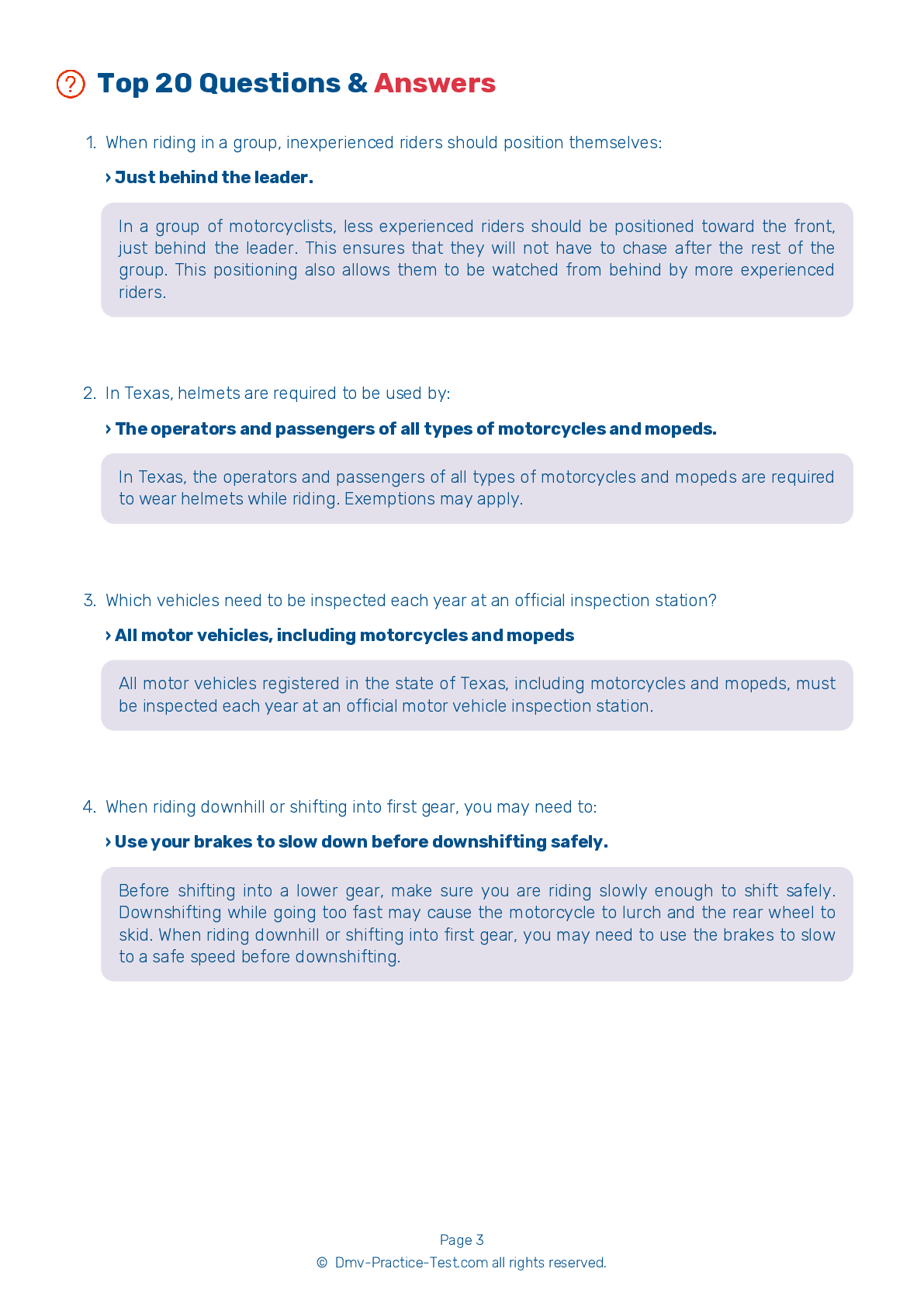Motorcycle Test | License TX 2025 | FREE Online Practice! #1 Page 2 of 4
Take this FREE motorcycle test (license in TX 2025) to check your knowledge of the road rules. To improve your results, download a motorcycle handbook online, study theory, and practice for free on our website. Still worried about how to get a motorcycle license in Texas in 2025? Check our website for more sample tests, train as much as possible, and boost your grades!
6 . When passing, you:
Passing must be completed within posted speed limits. Only pass another vehicle where it is safe and legal to do so.
7 . When riding through a curve, a group of motorcyclists should:
While a staggered formation is generally recommended, riders in a group should move into a single-file formation when taking curves, taking turns, entering a highway, or leaving a highway.
8 . Before starting out, your fuel valve should be:
Before setting out on a ride, you should make sure that your motorcycle's fuel supply valve is open. If the fuel valve is closed, the engine may still start with the fuel that is remaining in the lines from a previous ride, but it will stall once the lines are empty.
9 . Riding under the influence of any medication which impairs your riding is permitted:
Many prescription and non-prescription drugs can impair the safe operation of motor vehicles. You should never operate a motor vehicle on any roadway with any trace of a controlled drug, substance, or intoxicating compound in your blood.
10 . An integrated braking system:
An integrated braking system is a variant of a linked braking system. Partial front braking is applied whenever the rear brake is activated. Check your owner's manual for a detailed explanation of the braking system on your motorcycle.
See the exact questions that will be on the 2025 Texas DMV exam.
99.2% of people who use the cheat sheet pass the FIRST TIME
Jeneen was tired of paying $5/gallon. She got herself a scooter that required the motorcycle license. She studyed the motorcycle test cheat sheet and passed her test the next day!
Christopher tells us how he knew nothing prior to obtaining the motorcycle study guide, and he only got one question wrong because he clicked on the wrong answer by mistake.



